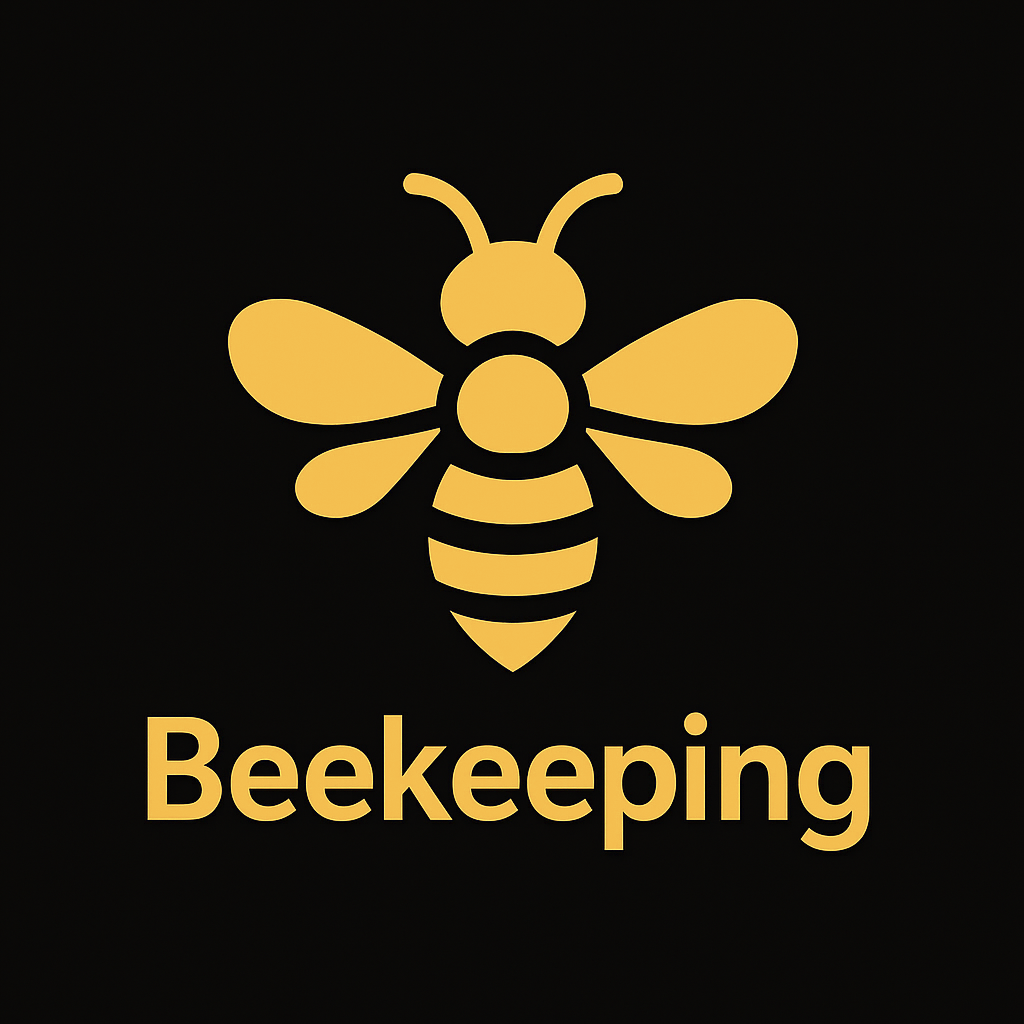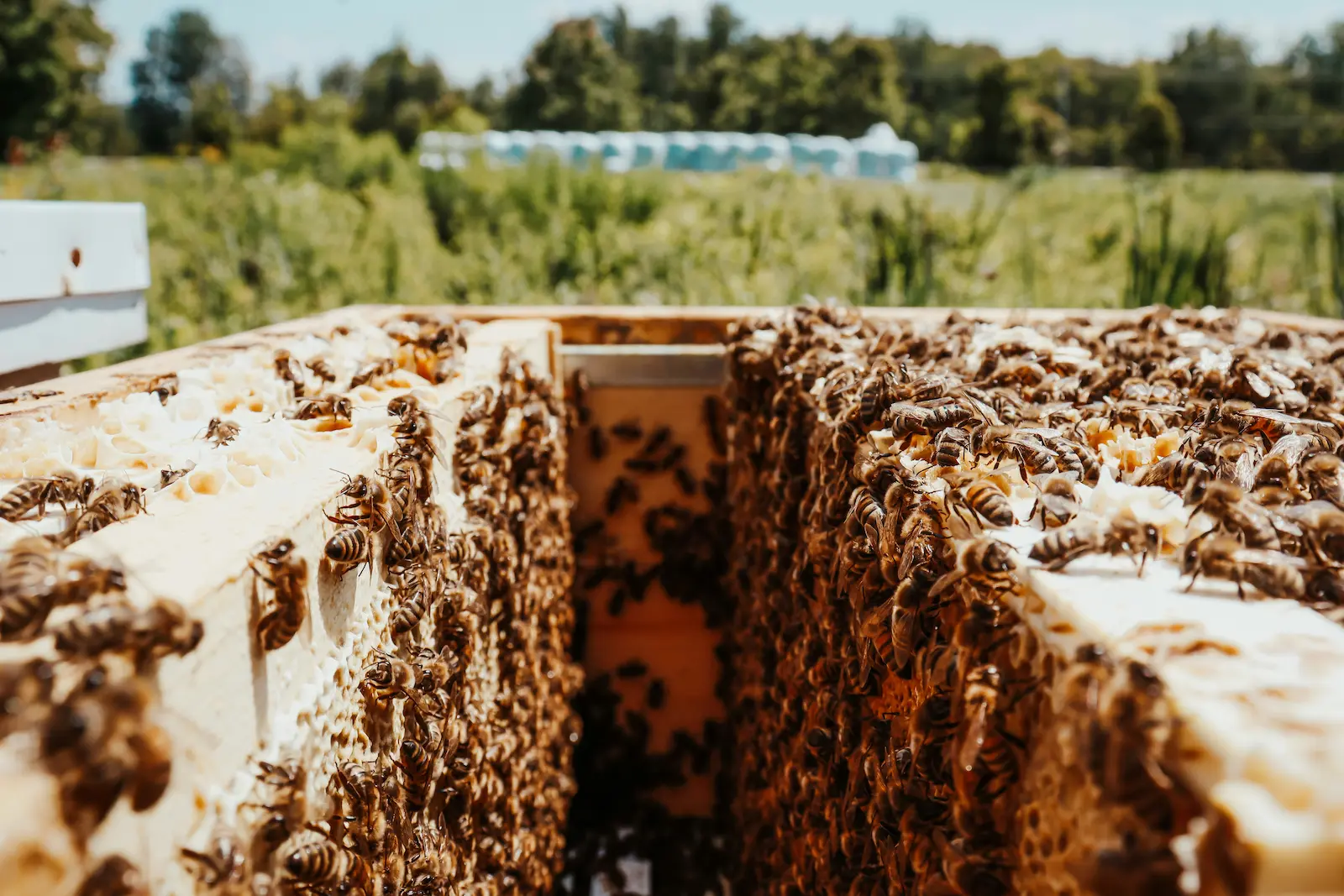Bee Stings – Treatment, Reactions and Safety for UK Beekeepers
Bee stings are an almost inevitable part of beekeeping. With the right preparation, you can reduce how often you are stung, manage the pain and swelling when it happens, and recognise when a reaction needs urgent medical attention.
This guide focuses on honey bee stings in a UK beekeeping context and is designed to sit alongside your practical knowledge of protective equipment, good hive management and hive hygiene.
What Happens When a Honey Bee Stings?
When a honey bee stings, it injects venom through a barbed stinger. In many cases, the stinger and venom sac remain in the skin and continue to pump venom for a short time. The body’s immune system reacts to the venom, causing pain, redness and swelling around the sting site.
For most people, this is uncomfortable but manageable and settles over a few hours or days. For a small number, the immune reaction is much stronger and can become life-threatening.
Types of Reactions to Bee Stings
Reactions are often grouped into three broad levels. This is a general guide only – if you are ever unsure, treat it as more serious and seek medical help.
| Reaction type | Typical features | What most people do |
|---|---|---|
| Mild local reaction | Pain, redness and swelling around the sting site, usually less than 10 cm across, settling over hours or a couple of days. | First aid at home – remove stinger, wash, apply cold compress, consider antihistamines and simple pain relief if needed. |
| Large local reaction | Swelling and redness spreading beyond the sting site, sometimes over a whole hand, arm or leg, feeling hot and itchy. | First aid plus monitoring. Some people speak to a GP or pharmacist about medicines to reduce swelling and itching. |
| Systemic / severe reaction | Symptoms affecting the whole body – difficulty breathing, tight chest, swelling of face or throat, feeling faint, rapid pulse, widespread rash or collapse. | Medical emergency. Call 999, use an adrenaline auto-injector if prescribed and follow emergency advice. |
Reactions can change over time, which is why experienced beekeepers still need to keep an eye on how their body responds from season to season.
First Aid for Bee Stings
For most stings, simple first aid can make a big difference to comfort and recovery. You can adapt these steps to suit your home first-aid kit and any personal medical advice you have been given.
- Move to a safe space away from the hive or angry bees.
- Remove the stinger as soon as you can by scraping it out with a fingernail, credit card or hive tool. Try not to squeeze the venom sac.
- Wash the area with soap and cool water to reduce the risk of infection.
- Apply a cold compress or wrapped ice pack for 10–15 minutes at a time to reduce pain and swelling.
- Elevate the limb if the sting is on an arm or leg and swelling is spreading.
- Consider antihistamines or sting-relief gels, following the instructions or pharmacist advice.
If pain or swelling continues to worsen after a couple of days, or you are worried about infection, it is sensible to speak with a GP or pharmacist.
Emergency Signs – When to Call 999
- Has difficulty breathing, wheezing or a tight chest
- Develops swelling of the face, tongue, lips or throat, or struggles to speak
- Feels dizzy, very unwell, confused or collapses
- Has a fast heartbeat, clammy skin or a widespread itchy rash or hives
Anyone who has had a serious reaction to a sting should be referred for specialist assessment. Advice about whether to continue beekeeping must come from a healthcare professional who understands their medical history.
Bee Stings and Beekeepers
Beekeepers tend to receive more stings over a lifetime than the general population, simply because we spend more time close to colonies. Some people notice that their reactions become milder with repeated stings; others become more sensitive.
It is worth keeping informal notes on how you react from season to season, alongside your usual inspection records. If swelling suddenly becomes much larger, or you notice symptoms elsewhere in the body, it may be time to seek medical advice.
Reducing Sting Risk During Inspections
Even the calmest bees will sting if they feel threatened, but there is a lot you can do to keep the risk low during beekeeping.
- Wear good protective clothing: A well-fitting bee suit, veil and gloves are essential. Light-coloured, smooth fabrics are less likely to upset bees. See the equipment guide for more detail.
- Use the smoker properly: A few puffs at the entrance and under the crown board can calm bees by masking alarm pheromones. Avoid over-smoking or using harsh fuels.
- Choose sensible weather and timing: Inspections usually go better on warm, dry days when foragers are flying. Opening hives in cold, wet or windy conditions often leads to more stings.
- Move calmly and deliberately: Avoid sudden movements, strong fragrances and dark, furry clothing that can trigger defensive behaviour.
- Work with gentle stocks: If a colony is persistently aggressive, consider requeening with calmer genetics as part of overall bee health and apiary management.
Children, Neighbours and Others Around the Apiary
Bee sting safety is not just about the beekeeper. Thoughtful positioning of hives and clear communication can dramatically reduce problems for family members, neighbours and visitors.
- Site hives so that flight paths are above head height near footpaths or boundaries.
- Use fencing or screens to encourage bees to fly up and away from busy areas.
- Make sure household members understand basic first aid and where your sting kit is kept.
- Consider additional precautions if anyone close to the apiary has a known sting allergy.
For broader ideas on supporting pollinators beyond your own hives, see the Help the Bees and Bee Gardening guides.
Linking Sting Safety with Records and Planning
Keeping simple notes about where and when you are stung can help you spot patterns – for example, particular colonies, manipulations or weather conditions that lead to more stings.
- Note which colony you were working on and what the bees’ behaviour was like.
- Record how big the reaction was and how long it took to settle.
- Link sting notes to your year-in-the-apiary planning so you can adjust your inspection style.
If you prefer digital record-keeping, tools like the HiveTag web app make it easier to keep everything – hive records, varroa counts, disease notes and safety observations – in one place.
Bee Stings – Quick Questions
These brief questions summarise key points from the page and align with the FAQ schema above:
- Do I always need to see a doctor after a sting? – Not usually, if it is a mild local reaction. Seek help if you are worried, symptoms worsen or you notice signs of infection.
- Can I take antihistamines for swelling? – Many people do, but you should always follow the packet instructions and pharmacist or NHS advice.
- Is it safe to keep bees if I have asthma or heart problems? – This is a question for your GP or specialist, who understands your overall health.
- How many stings are “too many” in one incident? – Multiple stings can cause more severe reactions; if someone has many stings or feels unwell, seek urgent medical help.
Summary – Respect the Sting, Enjoy the Bees
Bee stings are a normal part of working with honey bees, but they should never be taken lightly. By understanding how stings work, practising good first aid, recognising emergency signs and keeping your beekeeping as calm and organised as possible, you can reduce risk and stay focused on looking after your colonies.
Use this page alongside the guides on equipment, hive management, diseases and pests and the year in the apiary to build a safe, confident approach to beekeeping in the UK.

